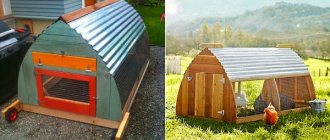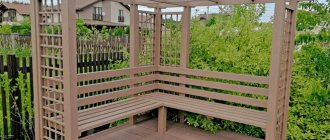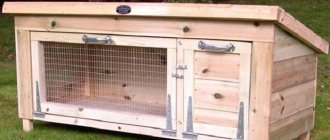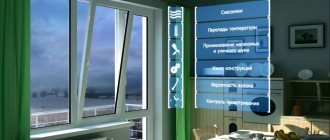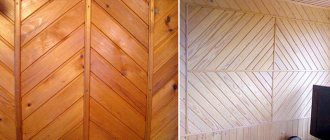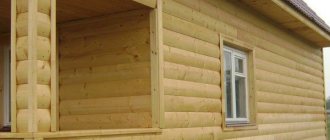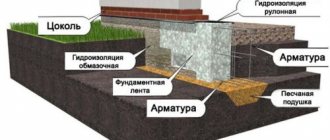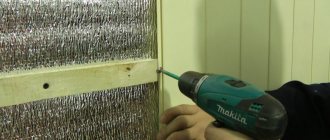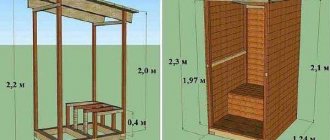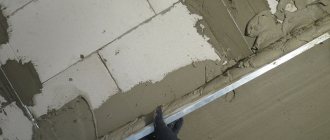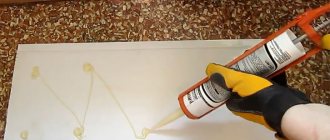What clapboard to cover the inside of the bathhouse
The lining for finishing the steam room is selected according to the following characteristics:
- type of lumber - when finishing a paired room with boards from a certain type of wood, eurolining is more often used;
- grade - the steam room is sheathed only with boards made from various elite types of wood, which do not contain knots or wormholes.
However, sometimes even living wooden knots fall out over time due to temperature fluctuations.
Types of wood for making bath trim
In order to choose the right specific lining for a steam room, you first need to familiarize yourself with the characteristics of the wood species from which the board is made. The lining of the steam room with such lumber is made from deciduous or coniferous trees.
Most often, bathhouse finishing is performed with the following species:
- Linden. It is highly resistant to moisture, retains the original color and structure of the board. In addition to finishing the bath, linden is used in the manufacture of a bath shelf, bench, ladle or door.
- Aspen. A soft breed that is highly resistant to water and steam. After intensive drying, the aspen becomes denser and stronger.
- Cedar. The most expensive of finishing materials. Cedar heats up less than linden and aspen, and also does not form resin like pine, so it does not burn the skin.
- Pine. An inexpensive tree that is rarely used in steam rooms. Much more often, a small dressing room or a separate room for relaxation is sheathed with pine.
The ceiling of the steam room is not covered with pine clapboard. After all, after heating, the released resin begins to drip onto the floor.
Standard lining parameters
The size of wooden clapboards is directly related to the type of wood from which they are made. Below are the recommended lumber specifications: width, length and thickness.
Such information is needed to correctly select the optimal number of lining boards. There are several differences between varieties.
| Breed | Dimensions | ||
| Width, mm | Length, m | Thickness, mm | |
| Aspen | 76-200 | 0,2-6 | 12-40 |
| Oak | 50-108 | 1-3 | 12,5-15,0 |
| Pine | 50-108 | 0,5-3 | 12,5-15,0 |
| Larch | 76-200 | 0,2-6 | 12-40 |
Wooden eurolining has the following standard dimensions:
- width – 80-120 mm;
- length – 0.5-6 m;
- thickness – 13-19 mm;
- spike size – 8-9 mm.
A simple lining has the following parameters:
- width – 8-15 cm;
- length – 0.6-6 m;
- thickness – 1.2-2.5 cm.
EU standard lumber has the following parameters:
- width – 96 mm (maximum);
- length – 2.1-3 m;
- thickness – 12.5 mm.
Russian enterprises produce the following sizes:
- width – 8-12 cm;
- length – up to 6 m;
- thickness – 1.3-1.9 cm.
More often, when lining baths, the following profiles are used:
- width – 96 mm;
- length – 2-6 m;
- thickness – 12.5 mm.
Thus, most of all, similar boards are distinguished by length. Their direct purpose is associated with this parameter.
Types of lining by profile
There are 4 types of linings, which are distinguished by the profile of the boards:
- standard;
- eurolining;
- block house (log imitation);
- American.
When finishing a bathhouse, the following grades of lumber are used:
- "Soft Line";
- "Calm";
- "Classical".
All these boards are eurolining and have a variety of sizes and profiles. They are sometimes called lamellas.
What kind of clapboard to cover the steam room of a bathhouse
When covering a steam room with wooden clapboards, the following lumber is most often used:
- linden board tolerates changes in air temperature, exposure to hot water and the formation of steam well, so lumber from it does not deform or discolor;
- aspen lining, in terms of parameters it is no worse than linden boards, and also has a lower cost;
- boards made of maple and alder; lumber made from such wood has low thermal conductivity, so they are often sheathed in any bathhouse, including a steam room.
Advice! When buying lining for a bathhouse, you must take into account the fact that in such a room the air temperature sometimes reaches 100 degrees. Therefore, to decorate such a room, it is better to buy lumber only from “safe wood”.
Features of finishing a brick bath
A brick bathhouse in terms of the features of wall cladding with clapboard is no different from if the external walls were built from any other material. It is necessary to begin work, moving from the corner farthest from the entrance. In the dampest room, it is better to avoid using nails, as they are prone to corrosion when exposed to vapors.
A brick bathhouse is usually lined from the inside with clamps, which are good because they do not damage the lining. If you have not yet started construction, then it is best to make a dressing room no larger than 150 x 250 cm. This way you will not only eliminate drafts and the creation of a cold space, but also save on lining, which will be used for finishing brick walls.
The premises should be insulated; mineral wool or polystyrene foam are excellent for this. The first is fixed using wooden slats, but for foam plastic special fastenings must be provided. Brick walls should be finished from bottom to top. This also applies to work on the floor, walls, and ceiling. Experts recommend abandoning products in “quarter” and “rabbet”. The most recommended lamellas are those with tongue-and-groove profiles. Such finishing on brick walls will not move over time, and the density of the joints will not be disrupted, which is especially important for a material that transmits heat so easily.
Calculate the area of the internal lining
For example, it is necessary to cover a paired room measuring 3x3 m with clapboards, and the ceiling height is 2.5 m. In this case, finishing is carried out on all walls and on the ceiling, and the floor is not taken into account.
The bathhouse has 2 rooms - a steam room 2x3 m and a dressing room 1x3 m. Then the finishing area of the first room is equal to the following parameters:
- area of 2 long walls of the steam room = 3*2.5*2=15 sq. m;
- area of 2 short walls = 2*2.5*2=10 sq. m;
- ceiling area = 2*3=6 sq. m.
Thus, the total finishing area of the bath = 15 + 10 + 6 = 31 square meters. m.
Next, you need to calculate the area of the hallway lining in the bathhouse. The final calculations will be as follows:
- area of 2 long walls of the dressing room = 3*2.5*2=15 sq. m;
- area of 2 short walls = 1*2.5*2 = 5 sq. m;
- ceiling area = 1*3=3 sq. m.
The total finishing area of the hallway in the bathhouse = 15+5+3=23 sq. m.
Total area of bath finishing = 31+23=54 sq. m. Moreover, from the final figure you need to subtract the area of windows and doors, after which you need to add a 15 percent supply of lumber for trimming.
Advice! You should not buy lining unless it is wrapped in shrink film. Such boards are considered a low-quality building material, which instantly loses color and greatly damages the finishing of the bathhouse.
How to take measurements correctly
If measurements are taken correctly for finishing the steam room with clapboard, the following actions are carried out:
- measure the height, length and width of the steam room where the bathhouse will be located;
- where the stove will be installed, the walls are decorated with tiles or various stones, wooden linings are installed in the bathhouse at a distance of at least 40 cm from the stove;
- When taking measurements, the thickness of the thermal insulation itself is also taken into account.
If the height of a steam room, for example, is 2.5 m, the length is 4 m, and the width is 3 m, then what size eurolining is needed? It depends on how the board is mounted: horizontal or vertical.
In the first finishing option, planks of only 1 size and a length of 2.5 m are used. They are used to cover the walls.
If the ceiling is finished first, then a shorter length of lining is used. The number of linear meters is calculated based on the width of the board.
If the bathhouse is sheathed horizontally, then a long eurolining is used, the maximum length of which is 3 m. When using a regular board, first determine what width it should have.
With eurolining, things are simpler. It has a width of 88 mm.
Bathhouses made of brick or concrete must be insulated. You should pay close attention to the choice of insulation materials, the installation of vapor barriers and the installation of the frame.
Volume of lining square meters
Below is a table from which you can find out how many sq. m of lumber per 1 cubic meter, and also calculate the number of plank packages, where one consists of 10 lining panels. Using the table below you can find the estimated cost of finishing.
Material selection
Wood is present almost everywhere and in all decorative elements. This is not surprising, since this material has all the necessary technical and aesthetic properties that are so necessary when decorating a room. But there is also a wide choice among wood.
The most common breeds:
- pine;
- cedar;
- aspen;
- Linden.
The four types of wood most commonly used in construction. Now we need to look at each type separately.
Pine
A relatively inexpensive type of wood, characterized by the release of resinous substances under the influence of high temperature. Because of this, it is almost never used in various types of steam rooms.
Pine boards
Pine has found its application as a material for finishing dressing rooms and rest rooms. Visually there are no differences from ordinary lining.
Cedar
It is considered the most expensive type of wood for making lining. The merit of cedar is that it fills the air with aromatic resinous substances, which improve the steam effect. This material is not affected by high temperatures, unlike aspen or linden.
Cedar lining
If you can afford to buy cedar, then there is no need to think about how to line the inside of the bathhouse. Of course, cedar!
Important: The modern construction market, unfortunately, like any other, is not always honest with buyers. Sometimes sellers brazenly try to sell some cheap fake instead of expensive cedar. Therefore, you need to be careful when purchasing material.
Aspen
A fairly soft, pliable type of wood that is also heat-resistant. The cost of such material is small, about the same as the cost of pine. But aspen has its own characteristics that are not observed in almost any type of tree. The point is that after proper drying it becomes incredibly hard.
Aspen paneling
Knowing all the features of aspen, many owners made the handles of hammers, axes, and, indeed, all agricultural tools from it. There are practically no disadvantages as such, with the exception of one thing - hidden rot in the wood may appear. This puts the entire product at risk.
Linden
Linden is considered one of the highest priority materials. Even our distant ancestors were able to appreciate its special properties. Linden is not subject to deformation or any changes under the influence of water or hot steam.
Linden lining
The most suitable products made from this material are dishes, a door or a bench for a bath. But most often linden is used for upholstery of ceilings and walls.
Important: When choosing lining, special attention should be paid to inspection in order to identify knots. They should not be present on the bath upholstery material for safety reasons. The fact is that the presence of knots can cause a fire as a result of a sharp increase in temperature in this structure.
Article on the topic: do-it-yourself bathhouse in the country
How to line a bathhouse with clapboard
Before you start decorating a steam room, you need to think through and prepare everything. As a result, things will go faster, and such repairs will be inexpensive.
Below are step-by-step instructions for decorating a bathhouse with clapboards with your own hands.
Covering the steam room with boards is carried out in several stages:
- prepare the necessary tools;
- measure the bathhouse and calculate a certain amount of lumber;
- prepare load-bearing surfaces;
- install the frame;
- they line the bathhouse with clapboard.
After completing the above steps, final installation work is carried out. The new and beautiful bathhouse lining is ready!
Preparation of materials and tools
When finishing baths, the following materials are used:
- self-tapping screws, they are used when attaching the plank sheathing and the main frame bars to the wall, if the steam room is made of logs;
- unhewn timber, the size of which is equal to the following parameters - 40 * 50 mm;
- insulation;
- aluminum foil, which provides reliable vapor barrier; thanks to this material, steam does not reach the surface of the insulation layer;
- foil tape;
- finishing nails or clips - clamps.
In this case, you also cannot do without using the following tools:
- hammer;
- construction stapler;
- level;
- screwdriver or screwdriver.
Also, when lining a bathhouse, use a drill or a special hammer drill. The second tool is used to finish paired rooms with walls made of concrete or brick.
Choosing the method of installing the lining
The technology for lining a bathhouse with clapboard is the same. However, there are 2 installation options - vertical and horizontal.
The second method is more often used because it is more convenient for finishing and further operation.
After vertical installation, the temperature of the lumber below and above becomes different. Thus, the board quickly deteriorates and loses its shape.
Linings that are nailed horizontally are much less likely to dry out in the bath or become wider.
When finishing horizontally, steam rooms receive the following advantages:
- the length of the wall visually increases;
- when the floor is darkened, the old lining can be easily replaced with a new one;
- water does not get into the plank joint, the lumber dries faster and does not deteriorate longer;
- the air behind such boards circulates well;
- a vertical plank frame is considered a good barrier for rats or mice;
- It is much easier to finish a steam room horizontally than vertically.
Important! If the lining is mounted horizontally in a bathhouse, then its groove is directed downwards. Vertical installation is often carried out in those baths that are saunas.
There is dry air in these rooms. There is virtually no water, the walls do not darken, and water does not get into the board joints, because there is no water splash.
When carrying out vertical installation of lining in a bathhouse with your own hands, to ensure good air circulation in the boards, several holes are made using a drill.
Before sheathing a steam room, you should decide what you want to get in the end: a Russian bathhouse or a Finnish sauna.
Installation of sheathing
When installing frame sheathing in a bathhouse, a timber whose thickness is greater than that of the insulation is used. Mineral wool is used as thermal insulation.
The beam is installed perpendicular to the direction of the lining, while taking a step equal to 45-55 cm. If large irregularities occur in the bath walls, use a small lining made of the same wood species as the lining.
Then a wooden frame (sheathing) is attached to the bath wall. In this case, use screws with plastic dowels or self-tapping screws made of galvanized metal.
Conducting communications
After installing the lathing in the bathhouse, communications are carried out, and lighting is installed - light switches are installed.
This must be done from the very beginning of finishing. After installing the lining, it will be impossible to carry out communications without compromising the integrity of the cladding. We'll have to take everything apart again.
Insulation and vapor barrier
More often, mineral thermal insulation wool is used as bath insulation. A large number of different types of this material are sold on the market.
The main rule for laying insulation is the absence of cracks or gaps between the thermal insulating mineral wool and the board. Otherwise, in the future, temperature bridges will form in the walls of the bath.
In addition to mineral wool, polyethylene film, roofing felt sheets or glassine rolls are used as insulating material when finishing the steam room. Strips of these materials are fastened with a construction stapler and an obligatory overlap of at least 5-7 cm is made.
To ensure greater reliability, board joints are glued with wide construction tape or adhesive tape.
How to attach lining in a bathhouse
The finishing of the steam room with clapboard is carried out using a hidden method. Then use various screws, clamps (clips) or nails.
This prevents contact with hot hardware. These devices do not come into contact with steam or hot water and will not corrode.
Attaching the covering to the walls
When attaching the coating to the walls, standard technology is used.
The following points are taken into account:
- the lining is fastened into a tenon with self-tapping screws, which are made of galvanized steel;
- Before this, holes are drilled in the board in advance in order to prevent chipping;
- such lumber can be fastened with nails or clamps (staples);
- installation of the covering begins from the corner that is most difficult to get into, then the last lining is adjusted in length and width, which is practically impossible to do if access to the place of its installation is tightly closed;
- finishing of corners is carried out using wooden plinths, which are secured with stainless steel nails.
All wood structures are coated with an antiseptic solution.
Headlining
Installation of the ceiling covering, as a rule, starts from the entrance. Then the linings are nailed to the ceiling only with clamps (clips) or finishing nails.
When installing clapboards on a bath ceiling, they use finishing nails, which are hammered in with a hammer. To give an aesthetic appearance, the place where the nail was driven is treated with sandpaper.
A gap of 4-5 cm is made between the ends of the lumber and the bath wall. Then normal ventilation is installed in the steam room and the structure is allowed to “take a walk”, because the temperature under the ceiling covering in the heated steam room is the highest.
Doors and window slopes
Before covering bath doors with wooden lining, first prepare boards that have a specific length. Doorways are trimmed with platbands.
When finishing window bath slopes, the initial thin strips are applied to plastic linings. When using a more complex installation, first install the frame and then cover it with clapboard.
Doing it right requires care and preparation.
Advantages of using lining
- Versatility (can be used on any structure - floor, wall, ceiling);
- Relatively long service life;
- High aesthetic qualities. Lining, like no other material, allows you to preserve the spirit of the bathhouse, which is associated, first of all, with wood and wooden materials;
- Protection of finished structures from high humidity and reduction of heat loss.
- In order to answer the question of how to line a bathhouse with clapboard with your own hands, you need to clearly and consistently go through the following steps: Selecting the material
- Definition of technology
- Execution of work
How to cover a steam room with clapboard: features
When covering the steam room, you need to take into account the following nuances of installing the lining in the bathhouse:
- in a steam room, you cannot install the board horizontally, otherwise water splashes will get into the lock and the lining will become darker, but if the design requires horizontal fastening, then the tenons are installed so that they look up;
- it is necessary to use fasteners that are coated with zinc, because when a large amount of moisture is formed, iron quickly rusts;
- all fastening strips and corners must be slightly sharpened on top so that drops of water flow down faster;
- The slats need to be fixed at a distance of 4-5 cm from the bathhouse base, so as not to disturb the air ventilation in the bathhouse.
If the lining has turned black, it must be urgently treated with a special bleaching agent (for example, Senezh Sauna).
Choosing the method of installing the lining
Lining for the interior decoration of a bathhouse, according to step-by-step instructions, can be installed in one of several ways.
- The first is the simplest and involves the use of finishing nails. The products will need to be secured in such a way that the nail fits into the groove of the lining, and then is covered with the next lamella. Keep in mind that not all fasteners are suitable for these purposes, because under the influence of moisture and high temperatures, the metal can oxidize, and even the highest quality finish can lose its attractiveness.
- The second fastening method involves using a screwdriver. Many experts believe that this method is the most suitable when installing wooden lining. You will need to drill a hole in the panel so that its diameter is similar to the diameter of the screw.
- The third way to finish the inside of a bathhouse with clapboard is to use standard nails. This algorithm is often accompanied by deformation of the finishing of the walls of a brick bath; the wood may split. For this reason, this method in the bath should be chosen and used with caution. The fourth technology is to use staplers that are driven into the sheathing.
What is the price?
The cost of the lining will directly depend on the class. The presence of natural defects reduces the class. The lowest is “C”. In second place is “B”, and the highest class is “A”. But, despite this, there are also additional classes that are higher in rank than everyone else. These are “Premium” and “Extra”. They are produced absolutely without natural defects.
The price range for wood paneling will start at 13 rubles. The maximum cost is 200 rubles per unit. The figure may vary depending on the class of material and manufacturer. Sheathing is estimated at approximately 180-400 rubles per square meter.
Finishing the bathhouse with clapboard
When wondering what to line the inside of a bathhouse with, you need to be rational. Choose different types of wood for different rooms. For example, linden or cedar are suitable for finishing a steam room. Pine is suitable for finishing other rooms - you can save a lot of money on it.
Tools for sauna cladding
After choosing the material and method of fastening, you need to acquire the necessary tools. Only after this can you start working.
To decorate a bathhouse with clapboard you cannot do without:
- hammer;
- electric jigsaw;
- screws and nails;
- hammer drill;
- screwdriver;
- a special stapler (meaning a construction stapler);
- triangle;
- level;
- suspensions;
- cord;
- plumb line.
Here you need to use small nails, two centimeters.
